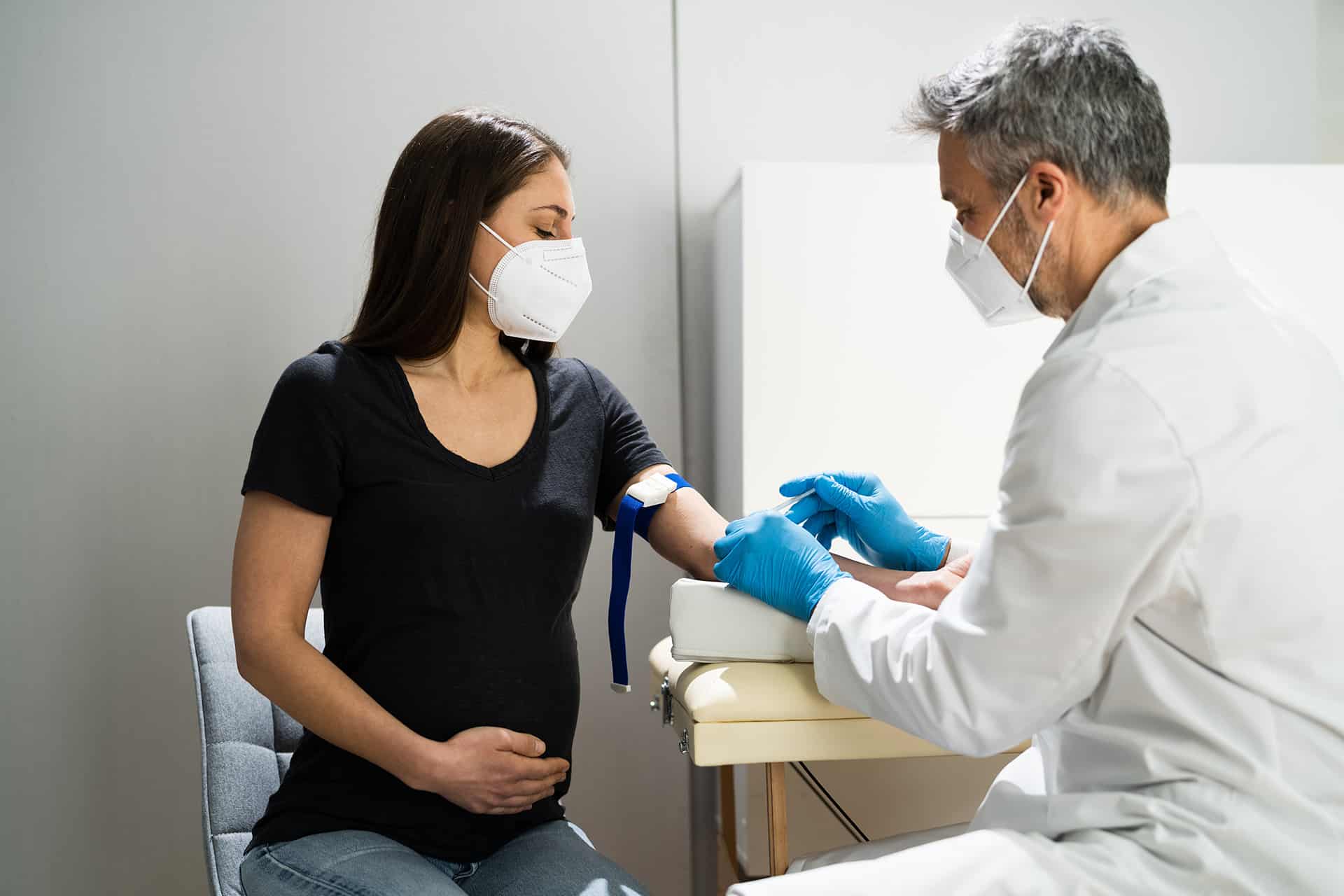In a previous blog, we discussed glucose tolerance, or the body’s ability to process glucose. This blog will deep dive into two of the conditions associated with glucose intolerance: insulin resistance and gestational diabetes.
What is Insulin Resistance?
Insulin is a hormone that is released from the pancreas to regulate blood sugar levels by allowing glucose to enter the cells. Insulin resistance, which can also be referred to as impaired insulin sensitivity, is a condition in which your muscle, fat, and liver cells are not responding to insulin properly, preventing them from removing glucose from the blood. As a result, your pancreas overproduces insulin, a condition known as hyperinsulinemia. Over time this can lead to other health concerns such as type 2 diabetes, obesity, cardiovascular disease, nonalcoholic fatty liver disease, and polycystic ovary syndrome. Diagnosing and treating insulin resistance early can prevent the progression of these diseases, but that requires a greater understanding of insulin resistance.
There are no symptoms at the onset of insulin resistance due to the overproduction of insulin by the pancreas to compensate, making insulin resistance difficult to diagnose. Symptoms of high blood sugar only start to present after prediabetes or diabetes has progressed. These symptoms can include headaches, blurred vision, increased thirst, and frequent urination. Discovering biomarkers of insulin resistance can help create diagnostic tests, enabling earlier intervention before the progression to diabetes.
How can Metabolomics be Used to Understand Insulin Resistance?
One method for understanding insulin resistance is through metabolomics, the study of metabolites or small molecules that move through biochemical pathways. Current research, performed using rodent models, suggests that insulin resistance is related to nutrient oversupply, either through increasing nutrient-derived toxic metabolites, overdriving nutrient utilization processes, or responding to nutrient-stress-mediated cellular toxicity. It has also been shown that insulin resistance and inflammation may share a thread through their interaction with bioactive lipids.1 Understanding the mechanism behind insulin resistance can suggest biomarkers for diagnosis and therapeutic actions and indicate metabolites that can be used to measure therapeutic effectiveness.
What is Gestational Diabetes?
Another condition associated with glucose intolerance through insulin resistance is gestational diabetes. Gestational diabetes is diabetes that starts around week 20 of pregnancy as a result of a hormone in the placenta which prevents insulin from functioning properly. Normally the pancreas can make enough insulin to overcome hormone-induced insulin resistance; however, in some cases, it does not, which leads to gestational diabetes. Gestational diabetes can lead to two major health problems for the baby: macrosomia or hypoglycemia. Macrosomia means that the baby is much larger than normal due to the high blood sugar levels in the mother, causing the fetus to produce more insulin and turn the blood glucose into fat which can make it harder to deliver. Hypoglycemia occurs just after birth, once the baby no longer has the high blood sugar levels of the mother, the baby’s blood sugar levels can fall dangerously low. These conditions make it imperative to identify gestational diabetes and monitor glucose levels appropriately throughout pregnancy.
Glucose Tolerance Test
The current testing strategy to identify gestational diabetes is a glucose tolerance test. The current diagnostic criteria vary slightly between different organizations, including the International Association of Diabetes and Pregnancy Study Group and the World Health Organization. Standards also vary based on what week of pregnancy women are tested. For example, standards exist for testing between 24 to 28 weeks, but criteria for earlier in pregnancy are less defined. Developing testing strategies to identify early-onset gestational diabetes is crucial. Although the clinical significance of early-onset gestation diabetes is unclear, some studies have found that it results in a higher risk of poor pregnancy outcomes. A study published in 2020 tried to apply diagnostic standards for the diagnosis of gestational diabetes before 20 weeks and found that their results could not consistently diagnosis gestation diabetes.2 This suggests that further research is needed to understand early-onset gestational diabetes and identify biomarkers that can be used to create diagnostic criteria.
Biomarkers of Gestational Diabetes
Some work has been done to identify metabolomic biomarkers of gestational diabetes. An article published in 2021 examined these metabolomic studies to identify the metabolites that were found in dysfunctional metabolic pathways underlying gestational diabetes. The most common small molecules included amino acids (glutathione, alanine, valine, and serine), carbohydrates (2-hydroxybutyrate and 1,5 anhydroglucitol), and lipids (phosphatidylcholines and lysophosphatidylcholines).3 These can provide a path to gaining a deeper understanding of gestational diabetes and developing more predictive and diagnostic tools. Further research still needs to be conducted to translate these findings and others into a clinical application.
Conclusion
Insulin resistance and gestational diabetes are two conditions that need to be better understood. Identifying underlying mechanisms of action and biomarkers can help diagnose patients earlier leading to more positive outcomes. One promising method for this is in metabolomics, as the analysis of small molecules can show a more comprehensive picture of the biochemical pathways involved in these disease states beyond blood glucose levels. Work has already started to identify the metabolites involved in these processes, but further research is still needed. Metabolon can help you further this research with our expertise in metabolomics and our expanding suite of targeted panels for glucose intolerance and insulin resistance. Check out our application page to learn more about our product offerings or contact us to get started.
References
- Petersen MC, Shulman GI. Mechanisms of insulin action and insulin resistance. Physiological Reviews. 2018;98(4):2133-2223. doi:10.1152/physrev.00063.2017
- Nakanishi S, Aoki S, Kasai J, et al. High probability of false-positive gestational diabetes mellitus diagnosis during early pregnancy. BMJ Open Diabetes Research & Care. 2020;8(1). doi:10.1136/bmjdrc-2020-001234
- Alesi S, Ghelani D, Rassie K, Mousa A. Metabolomic biomarkers in gestational diabetes mellitus: A review of the evidence. International Journal of Molecular Sciences. 2021;22(11):5512. doi:10.3390/ijms22115512





